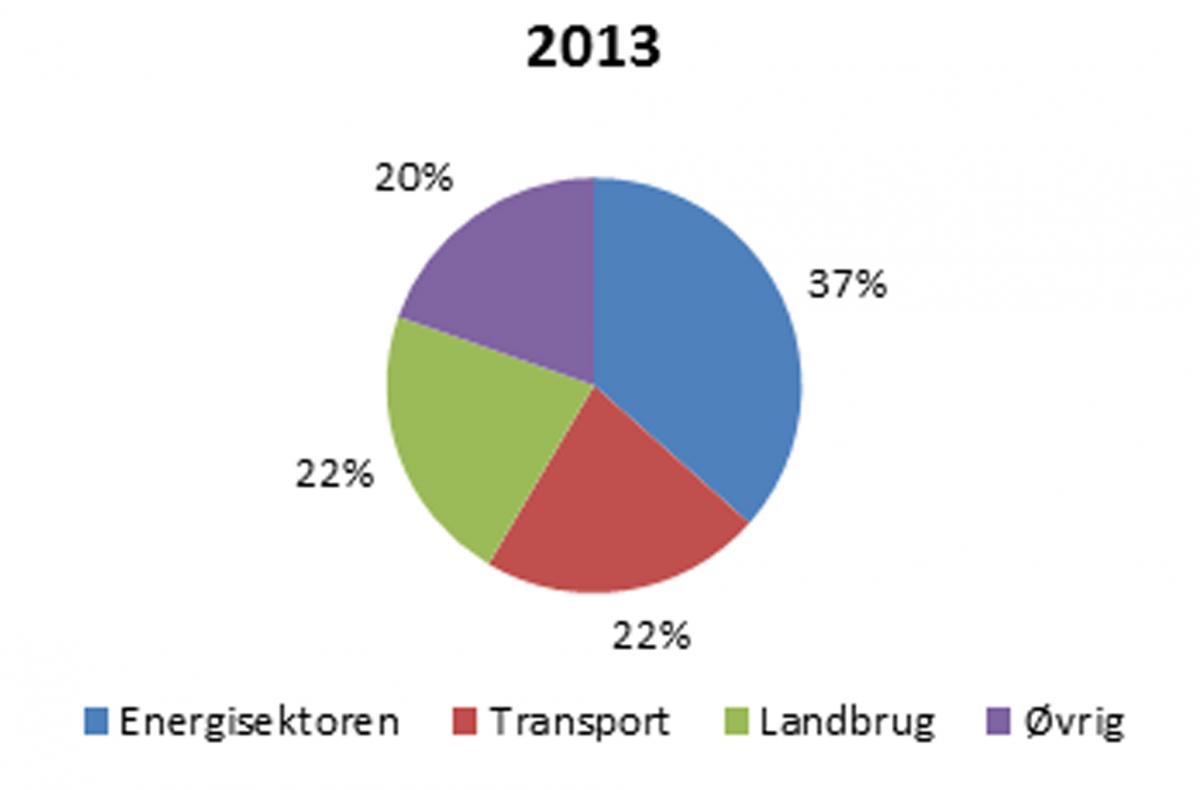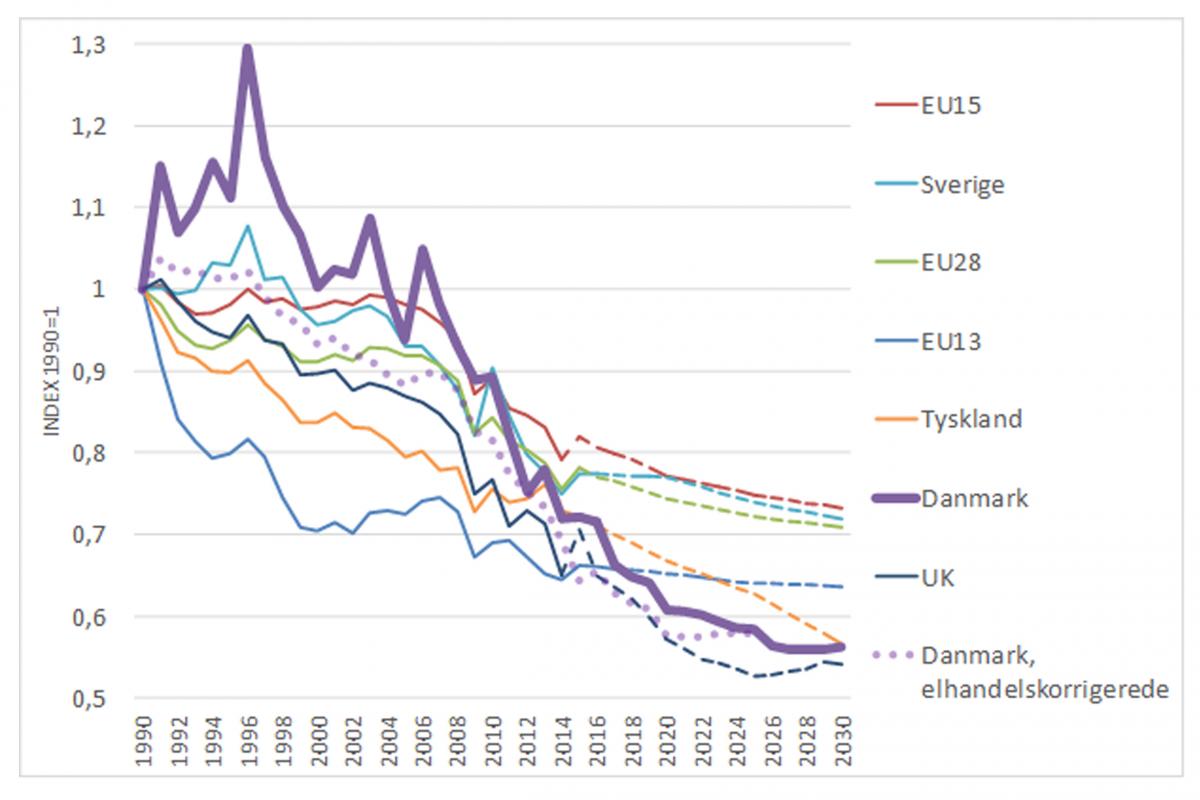Greenhouse gas is a common term for all gasses that contribute to the greenhouse effect. When the concentration of greenhouse gasses in the atmosphere increases, the greenhouse effect also changes, resulting in higher average temperatures and a changing climate on earth. Common greenhouse gasses are carbon dioxide (CO2), methane (CH4), laughing gas (nitrous oxide, N2O) and F-gasses.
Greenhouse gasses originate in several different sources
 Emissions of greenhouse gasses in Denmark come from especially three sectors: production of energy, agriculture and transportation. These sectors accounted for more than 75 pct. of total greenhouse gas emissions in Denmark in 2013.
Emissions of greenhouse gasses in Denmark come from especially three sectors: production of energy, agriculture and transportation. These sectors accounted for more than 75 pct. of total greenhouse gas emissions in Denmark in 2013.
In the energy and transport sectors, the greenhouse gasses primarily come from combustion of fossil fuels such as coal oil and natural gas. In Denmark, coal oil and natural gas are used for space heating, production of electricity and fuel for transportation. In agriculture, the emissions primarily stem from digestion in livestock and the use of nitrogen containing fertilizer.
The climate area is closely monitored
The development of the Earth’s climate is closely monitored prominently by the UN’s intergovernmental panel on climate change, the IPCC, which was established in 1988 as a consequence of the Brundtland Report “Our Common Future”. The panel regularly publishes reports evaluating and comparing the newest knowledge on climate change including the effects of climate change and our options for adapting to the consequences or for mitigating climate change.
The latest report from the IPCC concludes that manmade emissions of greenhouse gasses with a very high level of certainty have been the dominating cause for the observed increase in global average temperatures. The report also concludes that the oceans have heated up, that the amount of ice and snow is decreasing and that sea levels have risen.
Denmark has reduced emissions since 1990
The collective emissions of greenhouse gasses from Denmark were 55.5 million tons in 2013. That corresponds to each Dane giving rise to a little less than 10 tons per year. Since 1990, Denmark’s collective emissions have dropped with approximately 20 pct. The primary causes for this include more efficient energy use and an increased utilization of renewable energy sources such as solar and wind.
Read more on the historical development in Danish greenhouse gas emissions in the Energy Statistics.
Denmark expects to further reduce future greenhouse gas emissions.
Denmark has a range of international climate obligations, meaning CO2-emissions must be reduced further in the future. According to the latest projection, the Danish CO2-emissions are expected to be reduced by close to 40 pct. approaching 2020.
Comparison of emissions to other EU member states
There is a strong focus in the EU on closely monitoring the emissions of greenhouse gasses in Europe. As a means to do this, the EU Environment Agency publishes the emissions from the EU member states annually. The figure below shows the historic and the expected future reductions in greenhouse gas emissions for EU as a whole and for a selected series of member states.

Note: The graph is based on reporting by member states to the EU Environment Agency.
Numbers ad figures can be extracted directly from the environment agency databases here and here.